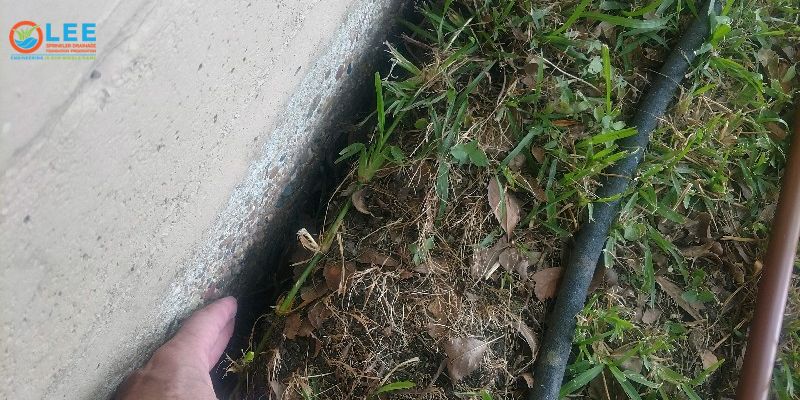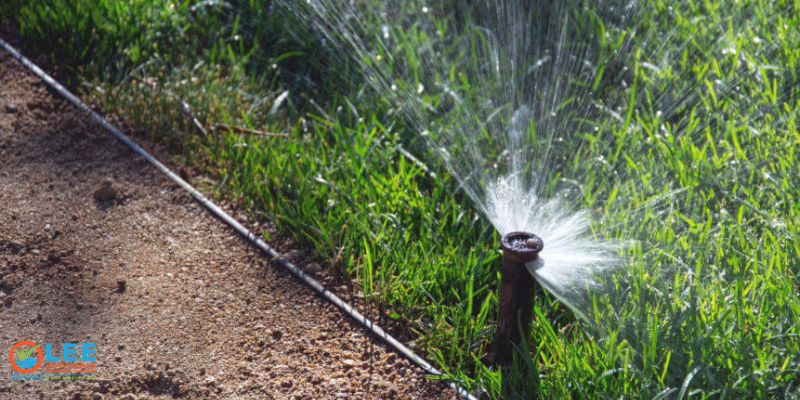Ensuring the longevity of your home involves more than just aesthetic maintenance; it requires a comprehensive approach, including the often-neglected aspect of foundation care. The foundation is the bedrock of your property’s structural integrity, making proper watering a crucial component of its preservation. Welcome to our comprehensive guide on “Choosing the Right Foundation Watering System for Your Home.”
In the following exploration, we will delve into the significance of foundation watering, highlighting its role in preventing structural damage caused by soil shifts. As we navigate this guide, we will discuss key factors, such as climate, soil type, home design, and budget constraints, providing valuable insights to make an informed decision. Understanding the importance of foundation watering is the first step towards safeguarding your home against potential issues and ensuring it stands strong for years.
The Importance of Foundation Watering

The importance of foundation watering cannot be overstated, as it stands as a pivotal safeguard against the silent and often insidious threat to your home’s structural integrity. The soil surrounding your home’s foundation is in constant flux, expanding and contracting based on moisture levels.
This dynamic soil behavior can lead to substantial problems in regions with erratic weather patterns, including shrinkage during dry spells and expansion during heavy rainfall. Such fluctuations stress the foundation, potentially resulting in cracks and structural damage. Foundation watering emerges as a proactive solution to mitigate these risks.
By maintaining a consistent moisture level in the soil, foundation watering helps stabilize the ground, preventing drastic shifts that could compromise the structural soundness of your home. This preventative measure is particularly crucial in areas where soil movement is prevalent, ensuring that your foundation remains resilient against the challenges of varying weather conditions.
In essence, foundation watering serves as a shield, protecting your home from the long-term consequences of soil-related stress. It is a proactive investment in the longevity of your property, offering peace of mind and potentially saving you from the financial and emotional toll of extensive foundation repairs down the line.
Factors to Consider When Choosing a Foundation Watering System for Your Home
1. Climate and Soil Type

One of the foremost considerations when selecting a foundation watering system is the unique interplay between your local climate and soil composition. Different regions experience varying weather patterns, from arid climates to humid conditions, each demanding a tailored approach to foundation care. Arid regions, for instance, may necessitate more frequent watering to combat soil desiccation during extended dry spells. Conversely, humid areas might require less frequent butprolonged irrigation to maintain optimal moisture levels without saturating the soil.
Equally important is understanding the composition of the soil surrounding your home. Different soil types, such as clay, loam, or sand, have distinct water retention capacities. Clay soils, for instance, tend to retain water, while sandy soils drain quickly. By comprehending the intricate relationship between your local climate and soil type, you can fine-tune your foundation watering system to address the specific needs of your property, ensuring effective moisture management and safeguarding against potential foundation issues. This holistic approach ensures that your foundation receives the precise care it requires based on the environmental nuances of your location.
2. Home Design and Landscape
The layout of your home and its surrounding landscape play a significant role in determining the effectiveness of your chosen foundation watering system. Features like slopes, flower beds, trees, and other landscaping elements can influence water drainage and distribution. Assess the topography of your property and any modifications or additions to your landscaping to understand how water naturally flows around your home.
For instance, a slope towards the foundation may lead to water pooling around the base, potentially causing soil erosion or over-saturation. Similarly, large trees with extensive root systems can absorb considerable water from the soil, impacting the moisture levels around the foundation.
By considering these elements, you can strategically plan the placement and configuration of your foundation watering system to ensure comprehensive coverage, preventing uneven soil moisture distribution and potential risks to your home’s structural stability. A tailored approach that integrates your home’s design and landscape features will contribute to the overall effectiveness of your foundation watering strategy.
3. Water Source
The water source for your foundation’s watering system is a critical aspect that directly influences its efficiency and sustainability. Different regions have varying access to water resources, and understanding the limitations and opportunities presented by your water source is essential.
If your home is connected to a municipal water supply, ensure that your foundation watering system aligns with any water usage regulations or restrictions in your area. Alternatively, homes with well water must consider the well’s capacity and the potential impact of consistent water extraction on the water table.
Moreover, rainwater harvesting can be a sustainable and cost-effective alternative. Collecting rainwater in barrels or cisterns during wet periods allows you to utilize nature’s contribution when needed, reducing dependency on other water sources.
By evaluating the characteristics of your water source, you can make an informed decision about the most suitable foundation watering system, balancing environmental considerations and ensuring a sustainable and reliable water supply for your home.
4. Budget and Maintenance
Establishing a realistic budget for installing and maintaining your foundation watering system is a crucial step in the decision-making process. Different systems come with varying upfront costs, and weighing these against your financial considerations is essential. While some systems may have higher initial expenses, they could prove more cost-effective in the long run due to lower maintenance requirements.
Consider not only the installation costs but also the ongoing maintenance needs. Some systems may demand more regular inspections, adjustments, or component replacements, adding to the overall cost of ownership. On the other hand, simpler systems may be more budget-friendly initially but could incur higher operational costs over time.
Understanding the financial commitment to maintaining your chosen foundation watering system is vital for its effectiveness. Striking a balance between upfront investment and long-term affordability ensures that your foundation watering strategy remains efficient and economically viable, contributing to your home’s overall health and stability.
Conclusion
Choosing the right foundation watering system is a crucial aspect of home maintenance. By understanding the unique needs of your property, considering local climate and soil conditions, and exploring various watering options, you can ensure the longevity and stability of your home’s foundation. Investing in an appropriate foundation watering system today can save you from costly repairs in the future, provide peace of mind, and preserve the value of your home.

